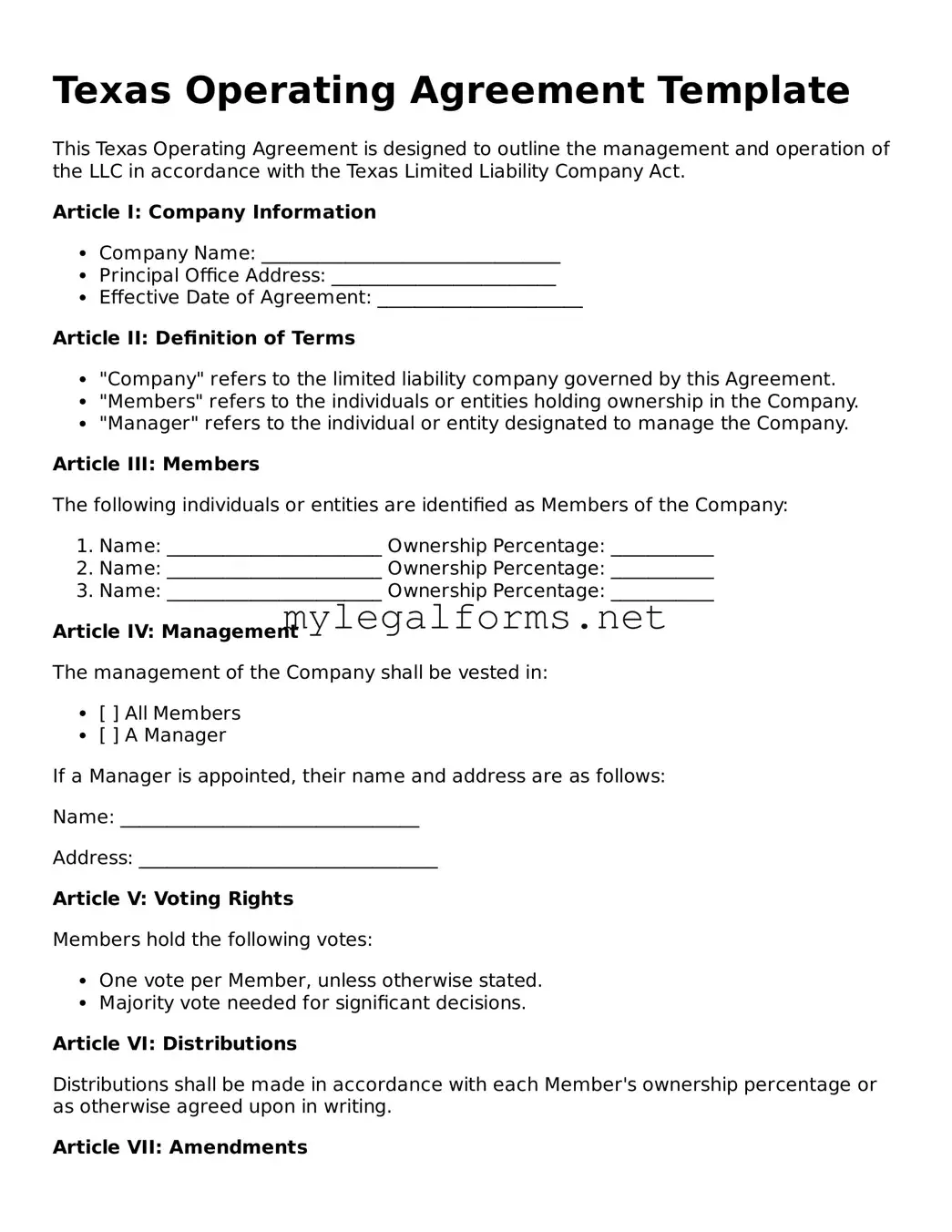Texas Operating Agreement Template
This Texas Operating Agreement is designed to outline the management and operation of the LLC in accordance with the Texas Limited Liability Company Act.
Article I: Company Information
- Company Name: ________________________________
- Principal Office Address: ________________________
- Effective Date of Agreement: ______________________
Article II: Definition of Terms
- "Company" refers to the limited liability company governed by this Agreement.
- "Members" refers to the individuals or entities holding ownership in the Company.
- "Manager" refers to the individual or entity designated to manage the Company.
Article III: Members
The following individuals or entities are identified as Members of the Company:
- Name: _______________________ Ownership Percentage: ___________
- Name: _______________________ Ownership Percentage: ___________
- Name: _______________________ Ownership Percentage: ___________
Article IV: Management
The management of the Company shall be vested in:
- [ ] All Members
- [ ] A Manager
If a Manager is appointed, their name and address are as follows:
Name: ________________________________
Address: ________________________________
Article V: Voting Rights
Members hold the following votes:
- One vote per Member, unless otherwise stated.
- Majority vote needed for significant decisions.
Article VI: Distributions
Distributions shall be made in accordance with each Member's ownership percentage or as otherwise agreed upon in writing.
Article VII: Amendments
This Operating Agreement may be amended only by a written agreement, signed by all Members.
Article VIII: Miscellaneous
- This Agreement shall be governed by the laws of the State of Texas.
- Should any provision be found invalid, the remainder of the Agreement remains in effect.
Signatures
By signing below, Members acknowledge their consent to this Operating Agreement.
- Member Signature: _______________________ Date: _____________
- Member Signature: _______________________ Date: _____________
- Member Signature: _______________________ Date: _____________
This document serves as a framework for your LLC's operations. Be sure to customize it to meet your specific needs.
